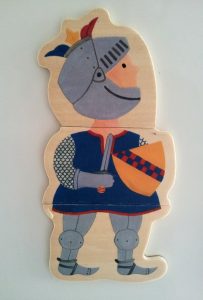Play Therapy
Play therapy is a treatment approach that is often used with children. Many people have heard of play therapy, but you may not know how it works.
Play therapy works because creativity is a child’s most sophisticated language. As parents, we hope that our children will tell us when something is bothering them. Sometimes, children cannot explain their concerns simply because they do not have the right words. Play therapy allows a child to use his or her imagination to express complex thoughts and feelings without the challenge of using adult language. Over time, the therapist helps the child to develop a language reflective of his or her feelings and, thus, enables the child to communicate more effectively with the family.
Social Emotional Learning
In 2003, The Collaborative for Academic, Social, and Emotional Learning (CASEL) designated five core competencies that promote student well-being: self-management, self-awareness, social awareness, relationship skills, and responsible decision-making. These areas underlie the bulk of many common school concerns, which often include violence, emotional intelligence, health promotion, social competence, and academic success.1
Research has shown that curricula based on CASEL’s social emotional competencies provide students with the emotional skills needed to succeed in elementary school.2,3 Such interventions are especially beneficial in promoting these four areas: positive youth development, mental health, substance use prevention, and academic performance and learning.4 Evidence shows that SEL curricula are effective because SEL skills give students the opportunity to manage potentially difficult social situations proactively. Mastery of these skills promotes a more productive learning environment.
While many school districts have implemented SEL programs for the general student body, some children need a bit more individualized attention and practice. Therapy can be a great resource for building these skills! The therapist’s in-depth knowledge of child development and strategies for changing behavior can provide a truly unique opportunity to assist in the child’s growth and maturity.
References
- Elias, M. J., Zins, J. E., Weissberg, K. S., Greenberg, M. T., Haynes, N. M., … Kessler, R., (1997). Promoting social and emotional learning: Guidelines for educators. Alexandria, VA: Association for Supervision and Curriculum Development. (click for more information)
- Collaborative for Academic, Social, and Emotional Learning (CASEL). (2003). Safe and sound: An educational leader’s guide to evidence-based social and emotional learning programs. (learn about CASEL)
- Lemerise, E. A., & Arsenio, W. F. (2000). An integrated model of emotion processes and cognition in social information processing. Child Development, 71(1), 107-118. doi:10.1111/1467-8624.00124 (read the article)
- Greenberg, M. T., Weissberg, R. P., O’Brien, M., Zins, J. E., Fredericks, L., Resnik, H., & Elias, M. J. (2003). Enhancing school-based prevention and youth development through coordinated social, emotional, and academic learning. American Psychologist, 58(6-7), 466-474. doi:10.1037/0003-066X.58.6-7.466 (read the article)

